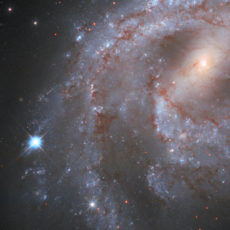
Now that you’ve seen the Cygnus blast wave, check out a supernova remnant from the year 185, as captured by the Dark Energy Camera, which can be found on the National Science Foundation’s (NSF) Víctor M. Blanco 4-meter Telescope at Cerro Tololo Inter-American Observatory in Chile. Classified as RCW 86, the only thing left of the white-dwarf star that exploded over 1,800-years ago is a ring of debris.
The supernova itself is referred to as SN 185, located 8,000 light-years away in the direction of Alpha Centauri, and the resulting structure, RCW 86, sheds light on how the remains have evolved over the past 1,800 years. RCW 86 was determined to have expanded so fast due to the region having large amounts of iron, a sign of a Type Ia supernova. This type of explosion occurs in a binary star system when a dense white dwarf draws material from its companion star to the point of detonation.
- Superior Optics: 400mm(f/5.7) focal length and 70mm aperture, fully coated optics glass lens with high transmission coatings creates stunning images...
- Magnification: Come with two replaceable eyepieces and one 3x Barlow lens.3x Barlow lens trebles the magnifying power of each eyepiece. 5x24 finder...
- Wireless Remote: This refractor telescope includes one smart phone adapter and one Wireless camera remote to explore the nature of the world easily...

Astronomers now have a more complete picture of how RCW 86 formed. As the white dwarf of the binary system swallowed the material of its companion star, its high-velocity winds pushed the surrounding gas and dust outward, creating the cavity we observe today,” said NOIRLab.







